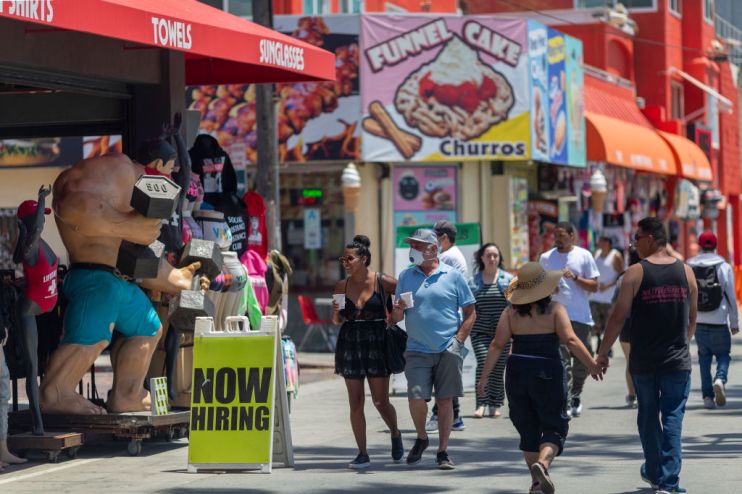US unemployment figures ‘confound expectations’ with 50 year jobless low, raising spectre of more Fed rate rises

US employers went on a hiring spree in April while raising wages for workers at the same time, according to the Labour Department.
The news that nonfarm payrolls increased by 253,000 jobs last month immediately sparked speculation that the US central bank the Federal Reserve could maintain its current policy of keeping rates higher.
The Labor Department’s employment report added 165,000 jobs added instead of 236,000 as previously reported while economists polled by Reuters had forecast payrolls rising by 180,000.
Reuters reported that payrolls were well above the 70,000-100,000 monthly increase needed to keep up with growth in the working-age population.
The unemployment rate fell to 3.4 per cent from 3.5 per cent in March and average hourly earnings gained 0.5 per cent after rising 0.3 per cent in March.
This meant wages increased 4.4 per cent on a year-on-year basis in April after climbing 4.3 per cent in March.
Other measures such as the Employment Cost Index and the Atlanta Fed’s wage tracker are evidence that wage growth is too strong to meet the Federal Reserve’s two per cent inflation target.
Earlier this week the Fed increased interest rates for the tenth time in a row.
Chair Jerome Powell and the rest of the federal open market committee (FOMC), the group tasked with setting interest rates in the globe’s biggest economy, sent borrowing costs up 25 basis points to a range of five and 5.25 per cent.
US unemployment and interest rate rises
Richard Flynn, managing director at Charles Schwab UK, said: “Investors will interpret today’s strong jobs report as a sign that the US economy is likely still too hot in the eyes of the Federal Reserve. The number of new jobs created has exceeded expectations and wage growth remains high. However, the latest Fed rate hike is still likely to be the last of the economic cycle.
“Although inflation remains high, the risk of a credit crunch has risen, particularly after the appearance of banking stress. This may mean additional volatility for the US stock market.”
Hugh Grieves, fund manager of the Premier Miton US Opportunities fund, said that afer 14 months of interest rate increases, the US unemployment rate has fallen to just 3.4 per cent lower than it was at the start of the hiking cycle when it was 3.6 per cent.
“Clearly economists need to rethink their forecasts of imminent recession.
“Given that the Federal Reserve hinted this week that it would pause on raising interest rates further, markets are now likely to be in a position to react positively to stronger economic data, rather than see it as an invitation for more aggressive Fed tightening.”
With Reuters